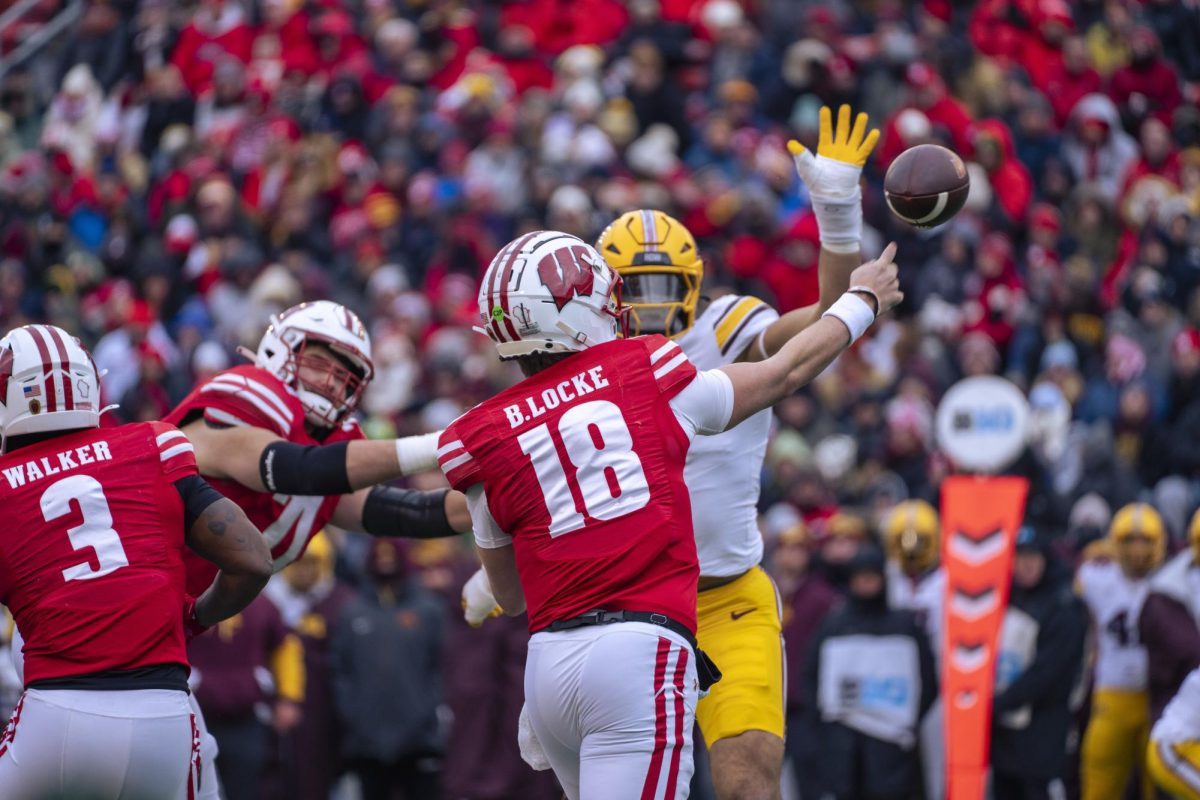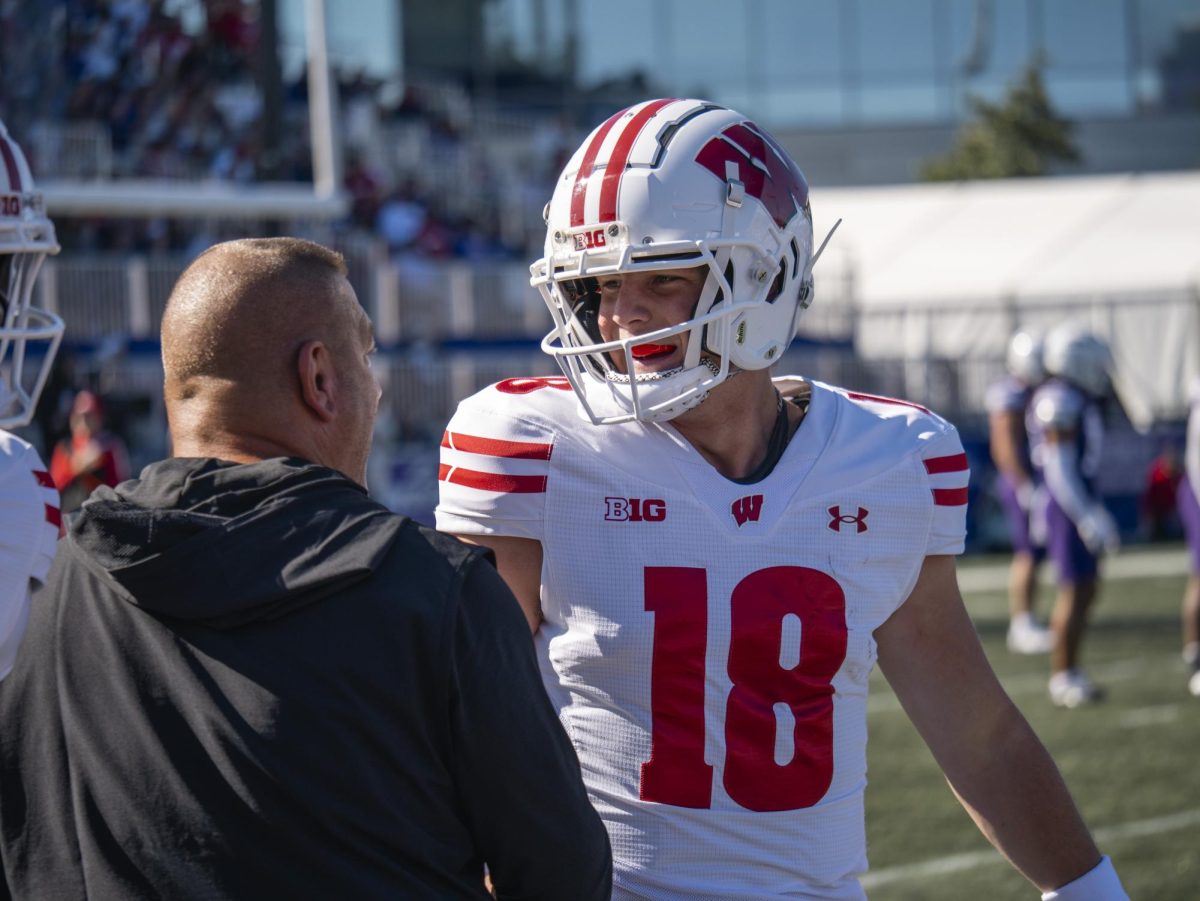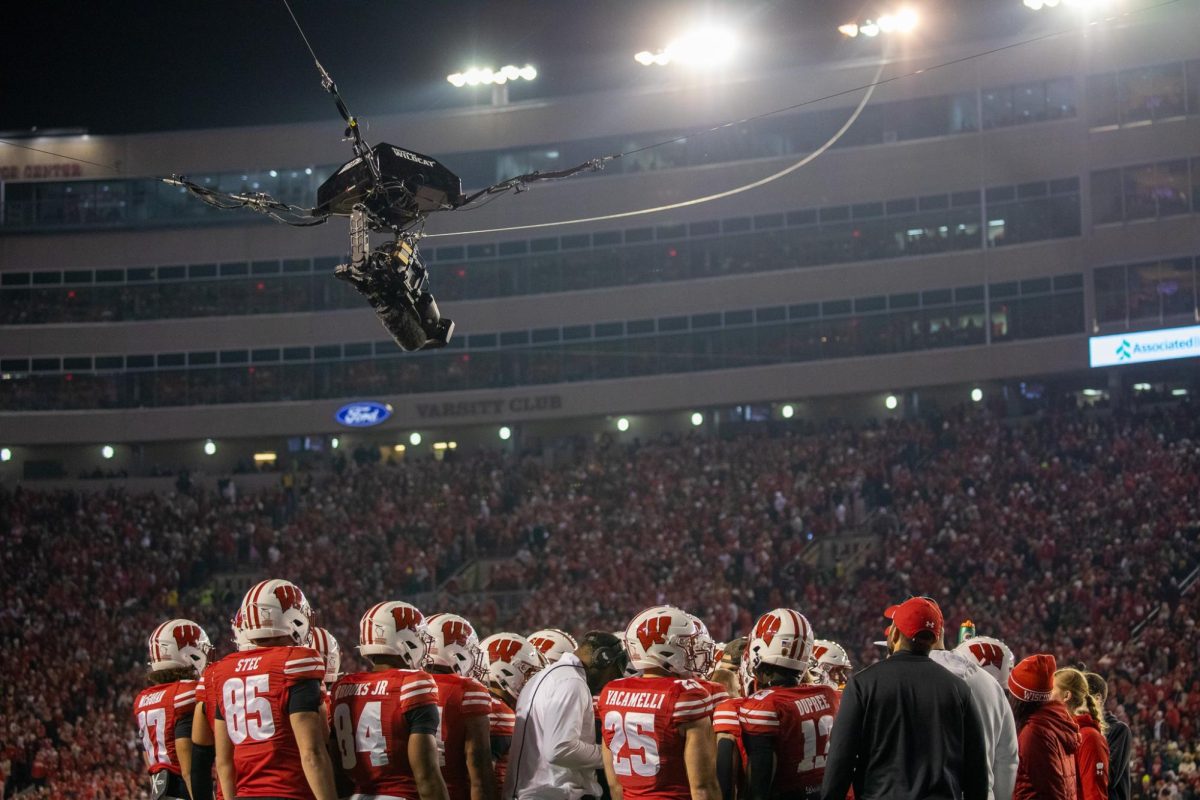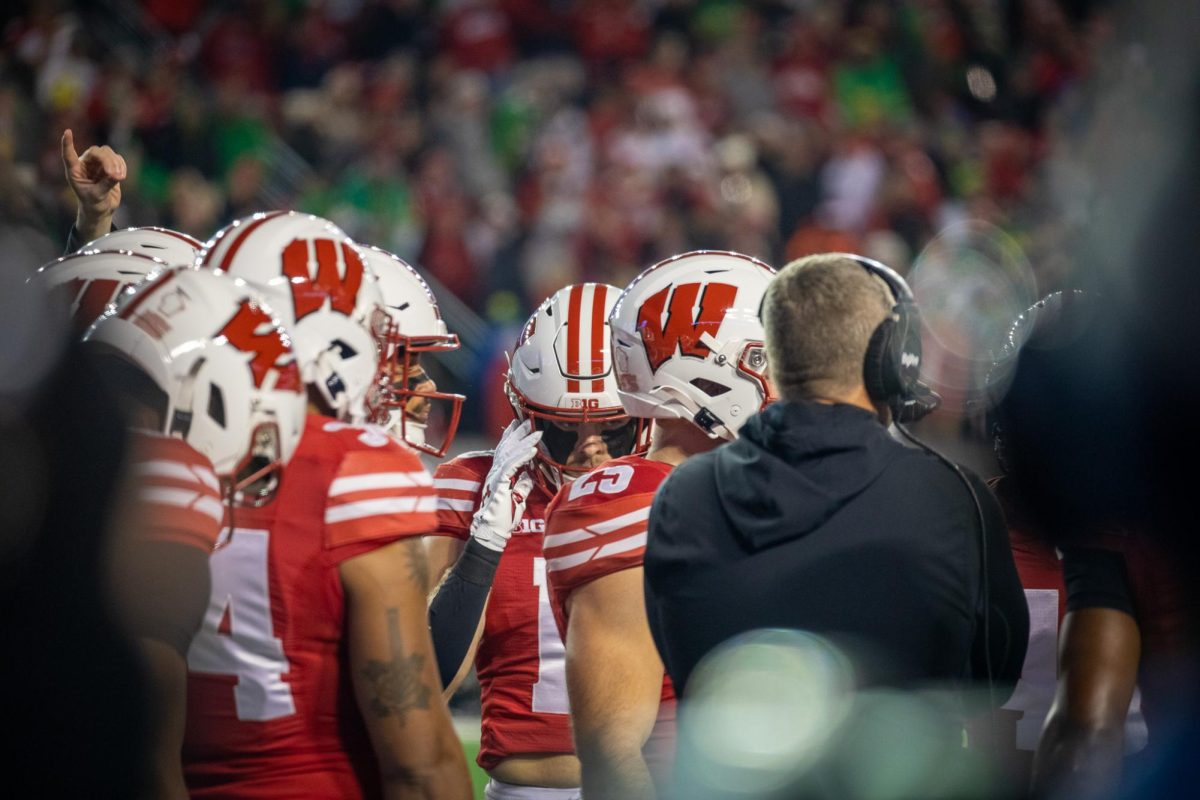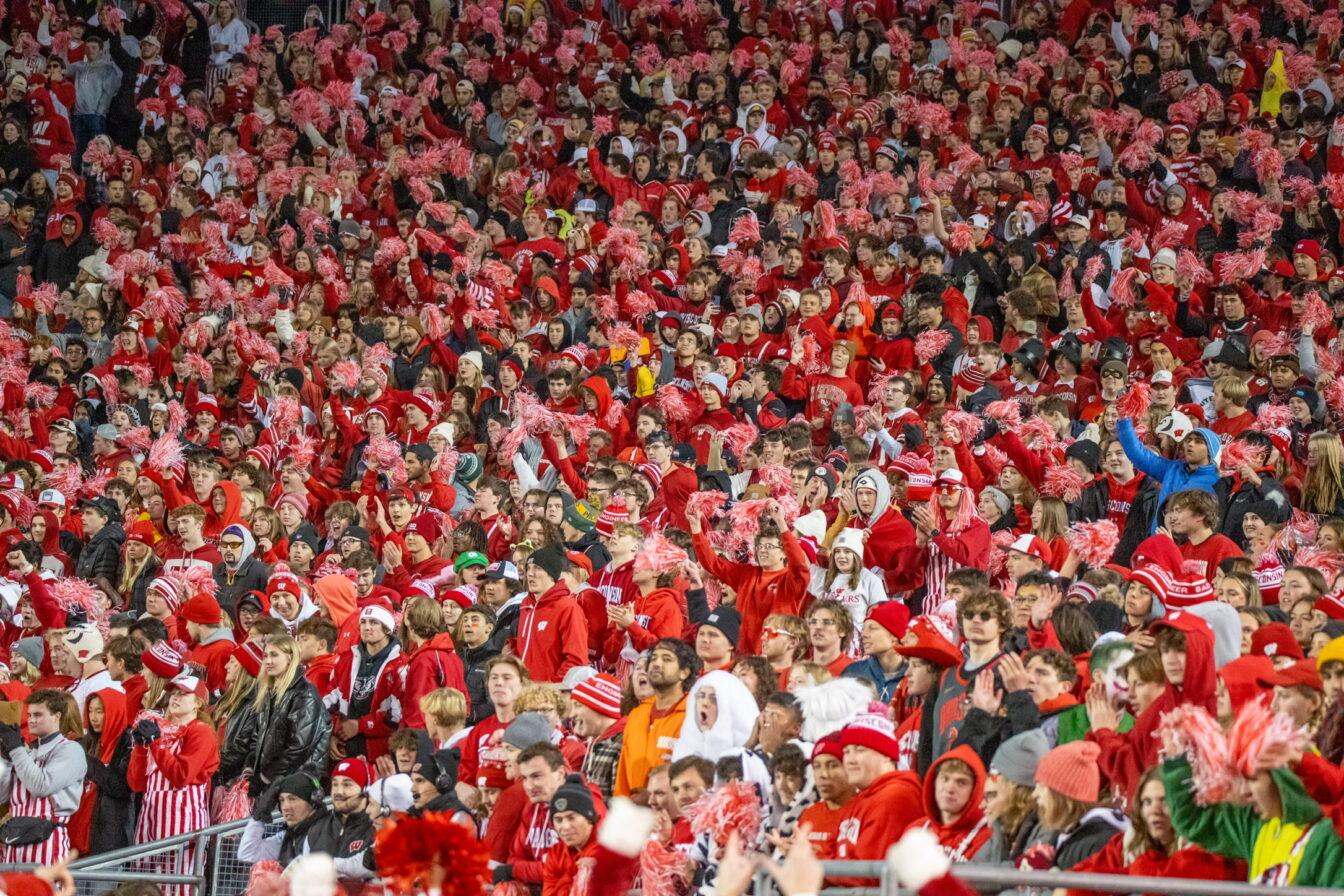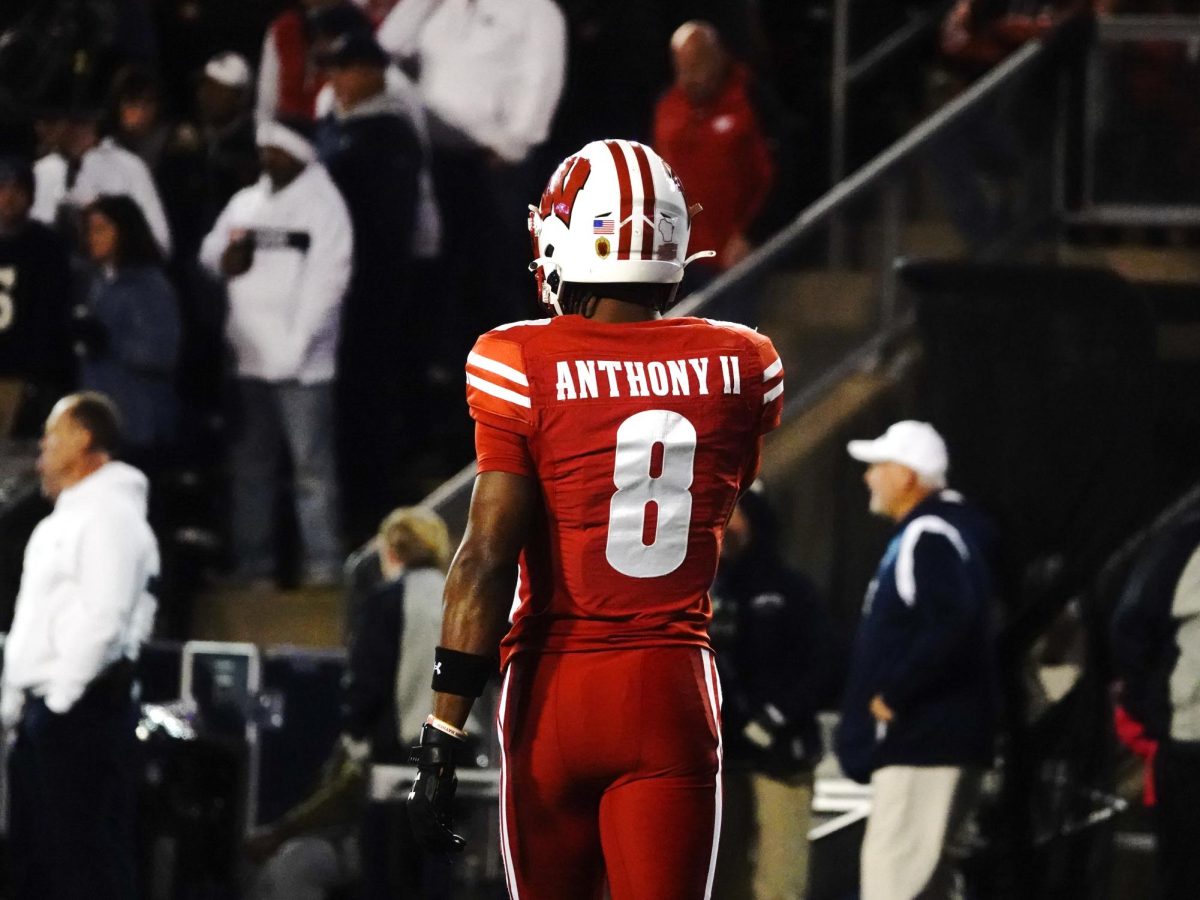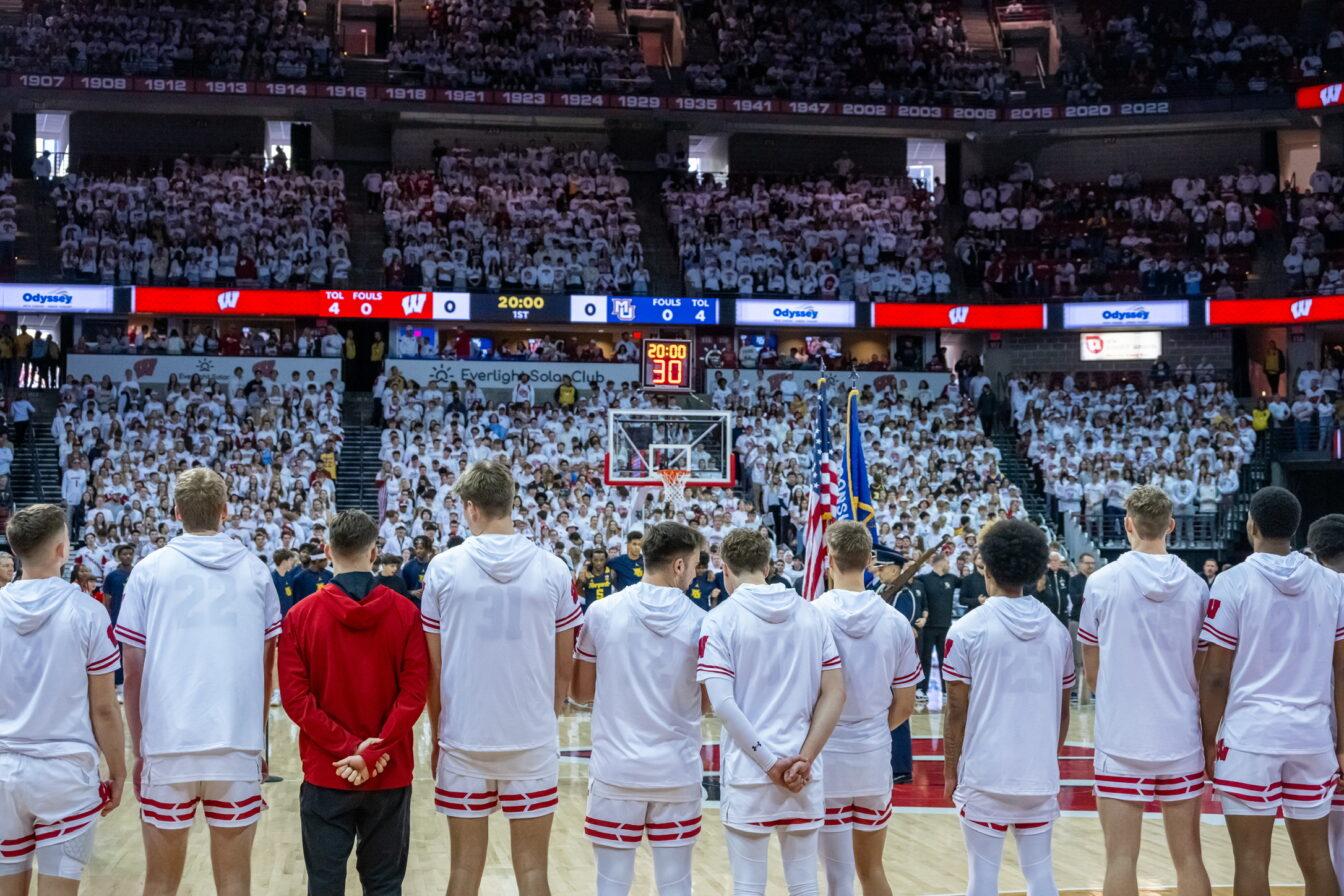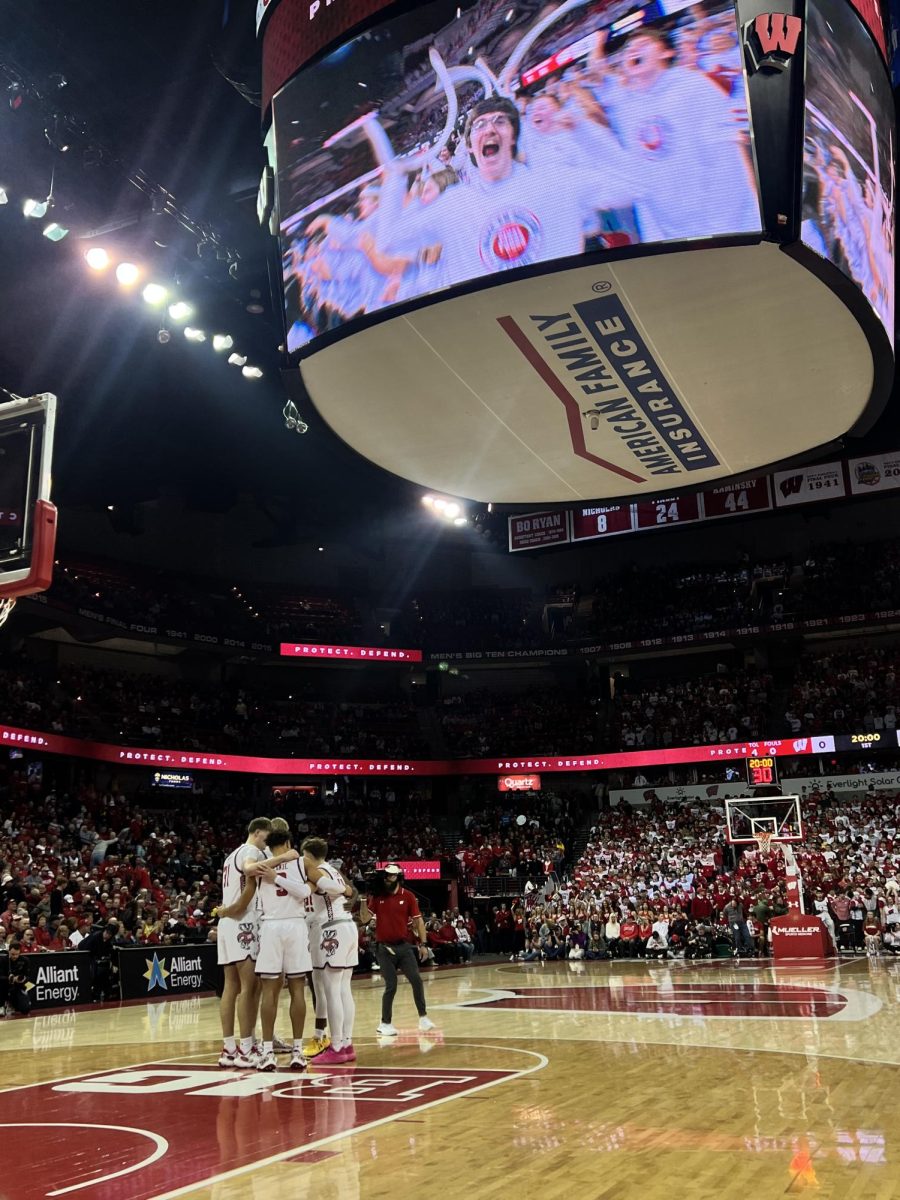When the Wisconsin football team heads to Minnesota this weekend, it will be the 123rd time that the two teams will have played. A quick scan of the record books will reveal that this is the longest standing rivalry in all of college football, and Minnesota leads the series 58-56-8 during that period.
Most fans of either team don’t know much more than that.
They might know that the trophy is called Paul Bunyan’s Axe or that Wisconsin boasts consecutive victories dating back to 2003, but the rest is largely a mystery.
And yet there is much more to Wisconsin’s biggest football rivalry than meets the eye.
The Slab of Bacon
While Paul Bunyan’s Axe may be the most recent incarnation of the trophy for the winner of the annual Wisconsin vs. Minnesota football game, it wasn’t the first.
Long before it’s introduction in 1948, the rivalry’s trophy used to be, quite simply, the “Slab of Bacon.” Used from 1930 through 1943, the Slab of Bacon was a rectangular piece of wood with a football in the middle and the letter M or W in the center — depending which way it was hung.
On opposites ends of the wood was the word “bacon,” implying that the winner each year would have the honor of “bringing home the bacon.”
It is likely the trophy would have lived on to this day were it not for the fateful events of 1943.
In 1943’s matchup between Wisconsin and Minnesota, Minnesota had won a close game 25-13, which led to fans rushing the field. In all the commotion, Wisconsin student Peg Watrous was unable to deliver the trophy to the appropriate Minnesota representatives after the game.
According to the Iowa Gazette, Wisconsin tried to send the trophy to then-Minnesota head coach George Hauser, but he turned it down, as he believed the trophy should be retired until after World War II had ended.
As a result, it was quickly lost, and it stayed lost for more than 50 years until it was found in a storage closet in Camp Randall Stadium in 1994. The Slab of Bacon appeared to have been maintained for many years after it’s mysterious disappearance and had all of the game scores from 1930 through 1970 recorded on the back.
Ironically, just a few years earlier, then-head coach Barry Alvarez joked that Wisconsin had “[taken] home the bacon, and kept it.”
It appears Alvarez hadn’t been joking after all.
The replacement trophy
In 1948, after the Slab of Bacon could not be found for a number of years, it was replaced by Paul Bunyan’s Axe, a creation from the National W Club, which has been used ever since.
Standing 6-feet tall, the axe has the score of each game recorded on its handle.
While neither team can now claim that they are “bringing home the bacon” like they used to, the new trophy comes with its own set of traditions and rituals.
At the conclusion of each game, should the current trophy holders retain the trophy, they will run to their own sideline to celebrate their victory. But should the other team win, they are allowed to run to their opponent’s sideline to steal the axe.
Oftentimes, the final tradition for the winning team is to symbolically chop down one of the goalposts with the axe as a sign of dominance.
The recruiting era
However, no tradition can live forever — even in the longest-standing of college football rivalries — without a little bit of help.
In the era of national recruiting, particularly by big-time football programs like Wisconsin, teams no longer consist of the local boys fighting for their state.
Instead, out-of-state recruits such as 2013 freshman cornerback Sojourn Shelton, who calls Ft. Lauderdale, Fla., home, have become the norm, rather than the exception.
And for them, while the rivalry still matters, it has a slightly different meaning.
“I don’t know a ton,” Shelton said. “Being a kid from Florida, I don’t really know too much of it. But this whole week, being here, I definitely know that hatred between us two and the battle that is coming.”
And so, when Alvarez took over as Wisconsin’s head coach, he chose to bring back the traditions in an interesting way.
Suddenly, each year a few weeks prior to the annual Wisconsin vs. Minnesota football game, the players had one more class in their weekly schedule — call it Rivalry Week 101.
“I made the game very important,” Alvarez told the Gazette in 2010. “I used to give a history lesson every year … to talk about how the rivalry has gone over the years, some of the great players that have played in it, some of the great games.”
“The fact is you’re a part of college history, ongoing history,” he said.
That tradition has continued even as head coach Gary Andersen takes the reigns of the team this year.
While Andersen himself is still picking up some of the finer points of the rivalry, he enlisted the help of Director of Player Personnel Henry Mason, who gave a speech on the history of the rivalry for the players and 1993 Rose Bowl Champion team.
“They had two people come in and speak about it,” Shelton said. “That team went 11-1 and won the Rose Bowl, but that one loss they had was to Minnesota. He said that when the guys all get back together they all still reminisce on that loss… We don’t want to, years down, have to feel that type of pain.”
More than just a trophy
Even though the trophy’s meaning has evolved and fans and players alike may not know its history like they once did, the rivalry hasn’t been made any less important.
The players still know the game is important and maintaining a trophy that they haven’t conceded since 2003 is enough motivation for them.
“A lot of guys that aren’t from the state still embrace Wisconsin, the history, the culture,” redshirt junior linebacker Marcus Trotter, a Racine native said. “You would think they are from Wisconsin, just how much pride they have in this school and this team.
“We all just want to win and represent the state well.”


